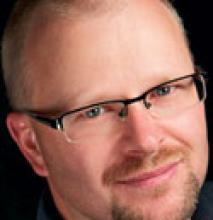Every other Saturday evening the discipleship group our family participates in meets. Various ages, including a boatload of energetic children, gather to enjoy life together, be encouraged, and seek ways to meet the needs of one another and our community as followers of Jesus.
While the big people talk and drink copious amounts of coffee, the kids play in our basement. They have a great time until parents eventually descend the stairs and find themselves among a virtual volcanic eruption of toys, games and stuffed animals. Soon follows the adult eruption, “What happened here?”
The little ones are simply doing what little ones do. Unconcerned about the mess, they always have rather entertaining answers to that most serious of grown-up questions. For the kids, this was simply vivid imaginations and short attention spans bursting forth in a new creative mess each week. And that eruption, that colourful mess of childlikeness, always prompts the question seeking an answer.
Many are the questions posed to the church these days. Some ask us to have answers for complex quandaries about the relationship between science and spirituality, the how and why of past church mistakes, or the intellectual stumbling blocks connected to the rationality of faith or the existence of God. All these Christians must be ready to engage in with humility, courage and confidence in the truth of the gospel.
At the same time, these are not the primary questions the church must have an answer for. It has been pointed out that a close study of the Book of Acts reveals that the majority of the preaching in it happens in response to questions being posed by those outside the church. A question is asked and the church proclaims the reason for the hope it has. The gospel becomes the answer to the wondering about what is going on in the life of the visible community of God’s children. In essence, as the church lives its day-to-day life, it is observed that something unique has happened and people ask what it’s all about.
“What is this new reality?” This becomes the first question the church gives an answer to, and the good news of another world—the kingdom—revealed in Jesus Christ and confirmed by his resurrection from the dead is the answer. It’s like the world watches what the children of God have done, see a new reality and ask, “What happened here?”
Which brings us to an unsettling thought: What is observed of Christian community these days that prompts this question? When Peter calls the first Christians to, “[a]lways be prepared to give an answer to everyone who asks you to give the reason for the hope that you have” (I Peter 3:15), it is in the context of the uncommon reality of unity, shared love, blessing even enemies and suffering for righteousness’ sake.
So we come back to it: How are we, as churches planted and incarnated in the hovels and hamlets of humanity, living in such a way as to awaken this question by those who watch us? Peter assumes that the life of the Christ-like community would inevitably draw out the question like adults walking into the imagination of another world brought to life. Be ready he says. Live ready.
The problem is, we’re so busy cleaning up the gospel, and maintaining tidy and safe churches, that any childlike faith that erupts into wonderful imagination remains stunted or reprimanded. People will not ask the question that matters because we sang some songs well, used cool fonts on our websites or had appealing politics. But they just might if we were radically committed to love, humility and a life of suffering for righteousness’ sake. Are we ready? Perhaps that is actually the first question we need to answer.
Phil Wagler (phil_wagler@yahoo.ca) lives in Surrey, B.C., where he longs to faithfully lead this type of question-worthy community.



Add new comment
Canadian Mennonite invites comments and encourages constructive discussion about our content. Actual full names (first and last) are required. Comments are moderated and may be edited. They will not appear online until approved and will be posted during business hours. Some comments may be reproduced in print.